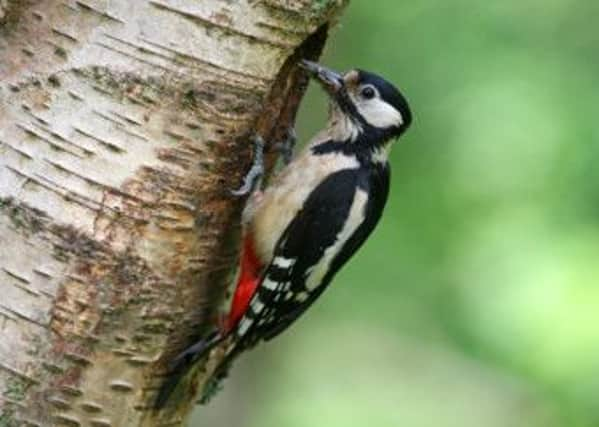Woodpeckers blamed for holes in telegraph poles


The constant pecking by the great spotted woodpecker, a mating call, is making the wooden poles unsafe to climb.
British Telecom workers have recently replaced several poles around the village of Glenborrodale on the Ardnamurchan peninsula.
Advertisement
Hide AdAdvertisement
Hide AdA spokesman for BT said a number of poles in Argyll and Lochaber have been replaced because they were damaged by woodpeckers.
He said: “This is a very unusual situation. BT poles are chemically treated to protect them but woodpeckers’ damage can allow water inside the pole, which can cause the pole to become rotten.
“The poles are obviously built to last for many years and the birds aren’t drilling for any trapped insects.
“During mating season the birds drill into the poles as a mating call so it is the water seeping in and rotting the poles from the inside out that’s the problem.”
He added: “BT Openreach engineers are required to test poles before climbing them to make sure they are safe.
“In most cases, phone services are not affected by the damage, which is most common during the mating season.”
Glenborrodale resident Peter Stockdale said the woodpeckers had become a feature of the coastal community in the past few years.
He said: “You see a lot of them about and hear them drilling all the time. They are beautiful birds, I think everyone enjoys them being here. My wife and I put out food for them.”
Advertisement
Hide AdAdvertisement
Hide AdA spokesman for the British Trust for Ornithology said an increase in woodpecker numbers in recent years was driving the birds north.
He said: “It is most likely to be the great spotted variety of the species. Their population has increased by 329 per cent between 1995 and 2011, and they have been gradually moving north as the same time this has been
happening.
“It normally happens to older poles, not newer ones, especially when the wood has been creosoted. What some people have done is attach an artificial bird, a black woodpecker most prevalent in Europe, to the pole.
“As well as being larger, it is a territorial thing and the nesting bird thinks that pole is taken, and goes elsewhere.”
He added: “Because the numbers have increased so much, and so quickly, natural nesting sites have become scarce.”
An RSPB spokeswoman said the behaviour of the birds was “entirely normal”.